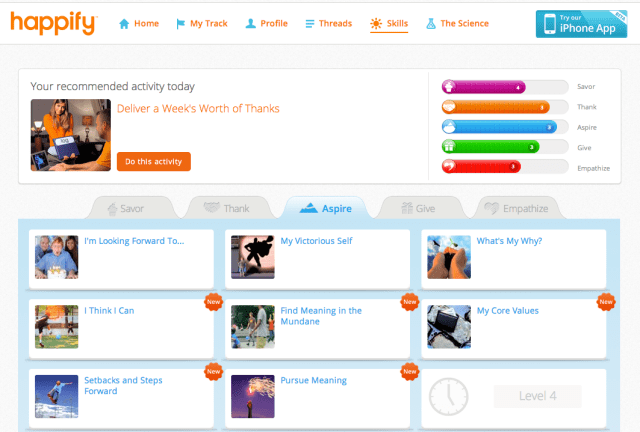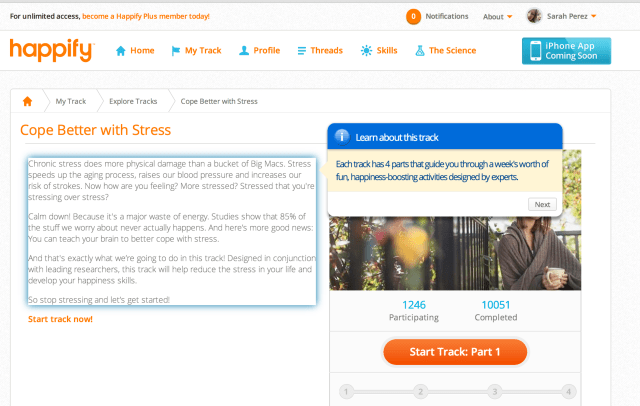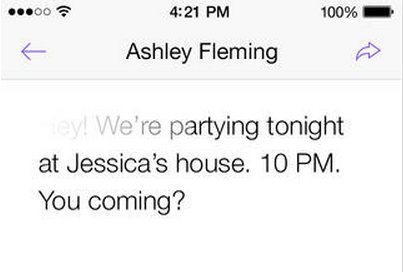The political organization No Labels says its members are trying to move past partisan politics, and focus on solving problems for the country. But did the government shutdown and the debt ceiling debate slow down the No Labels movement? Host Michel Martin speaks once again with Congressmen Reid Ribble, R-WI., and Jim Cooper, D-TN.
Copyright © 2013 NPR. For personal, noncommercial use only. See Terms of Use. For other uses, prior permission required.
MICHEL MARTIN, HOST:
This is TELL ME MORE from NPR News. I'm Michel Martin. Coming up in this program, states and cities across the country are facing major budget problems and so some leaders there are saying it's time to slash public pensions. We'll talk about that in just a few minutes.
But first, we want to go back to the issue that dominated political debate in recent weeks, which is the government shutdown. With the debate over the shutdown and the debt ceiling now behind us, we wanted to check-in with a group of lawmakers who say they are trying to put problem solving before politics. The group calls itself No Labels. It's made up of political leaders from both sides of the aisle and at all levels of government. But we're joined again today by two of the groups members, both members of Congress. Congressman Jim Cooper is a Democrat. He represents parts of Central Tennessee in the 5th Congressional District there. He joins us from the studios of Vanderbilt University in Nashville. Congressman Cooper, welcome back. Thanks so much for joining us once again.
REPRESENTATIVE JIM COOPER: Thank you. Good to be with you, Michel.
MARTIN: Also back with us, Congressman Reid Ribble. He is a Republican. He represents Wisconsin's 8th District, which includes Green Bay, and he's joining us by phone from his Capitol Hill office. Congressman Ribble, thank you so much for joining us once again, as well.
REPRESENTATIVE REID RIBBLE: Thank you, Michel. I'm happy to be here.
MARTIN: So let me start with you, Congressman Ribble, because the polls show that the Republican Party has taken the lion's share of the blame - if it's OK if I call it that - for what just happened on Capitol Hill. Are you hearing that from your constituents back home?
RIBBLE: It depends on the constituent, quite frankly. And by the way, I voted yes to end the shutdown last week. So I voted with the majority vote to see if we could put the government back to work and actually start to function again. And it is a mixed bag back home. I come from a district that is split almost 50-50. But I will tell you that the American people in Northeast Wisconsin were frustrated with the shutdown. They were frustrated for different reasons. But for the most part, the message that I was hearing from my constituents was to reopen the government and act like a grown up.
MARTIN: Now, you know, a majority of the Republican conference did not vote for the bill to reopen the government. And as I recall - maybe your account is different - but as I saw it, not a majority, but a number of the other No Labels Republicans also voted against the bill to reopen the government. I wondered if it was a tough vote for you, and at the end of the day, what was the tipping point for you? What was the deciding factor that made you vote for it?
RIBBLE: The deciding factor that made me vote for it was to hopefully put the government back into what's called regular order. The framework of the deal was that we would reopen the government. We'd lift the debt ceiling for a period of time, and then have our respective budget committees actually go with the House budget and the Senate budget to be brought into a conference to resolve the differences between those two budgets and then to appropriate to those levels. That's how the government is supposed to work. We shouldn't be having continuing resolutions. We ought to work like a real, functioning government, and this bill allows for that opportunity for the first time since I've been in Congress, and I've been in for three years.
MARTIN: Congressman Cooper, you're back in the district. And while it's true that on the whole Americans are likely to blame the Republicans for what just happened in recent weeks. They're not that pleased with Congress overall. In fact, there was one poll this month by the Associated Press that showed Congress had just a 5 percent approval rating. Are you experiencing that, as well? What kind of feedback are you getting from your constituents?
COOPER: Well, you're exactly right, Michel. Everybody suffered as a result of the shutdown. The whole nation was hurt. It's estimated to have cost about $24 billion in lost productivity. That's embarrassing for everybody, particularly for Congress. So I'm glad it's over and I think the message I'm hearing most from people is never let this happen again.
MARTIN: Can I ask each of you what kinds of conversations the two of you were having over the course of this thing? We keep hearing about a lot of the - well, the rhetoric that we heard from a lot of the leaders, let's say, was very hardball, very, you know, tough, you know, no ransom. There were a lot of words that people were using that people on each side didn't appreciate. And I just wanted to ask, were the two of you talking through all that?
COOPER: Absolutely. Reid is one of the nicest and most honorable of all members. He's relatively new to the Congress, but that can be a good thing, too, bringing a fresh perspective. The trouble's really with the extremes in both parties. One group on the Republican side called themselves the suicide caucus. That doesn't sound very friendly, does it? Then on the left, there were folks who didn't want to give an inch either. So Reid and I are centrists and I think that's a better way to govern.
MARTIN: Congressman Ribble, can I ask you the same question? Yeah.
RIBBLE: Yeah, yeah. Jim and I speak often. As well as - the thing that the American people didn't see, that was going on behind the scenes, was this interesting dynamic that I've not witnessed since I've been in Congress, where all these smaller groups that were getting - coming together, meeting in meetings and trying to work out areas of compromise and finding a way to move forward. I was having Democrats walking up to me on the House floor and saying, hey, I'd like to talk to you privately. And we'd step aside and they would say things to me like, how do we help you get out of this? How do we help Republicans save some face and move forward?
On the same hand, I was listening to Republicans asking Democrats the very same thing. So what you've got below the political aspect of this - and the leadership often is dealing in that political realm - regular members of Congress were trying to find a way forward because we knew this wasn't good for the country and we knew it wasn't a winning strategy. And we somehow had to prevent the damage so that you actually could have a functioning Congress after it was over. And so there were - it was very encouraging to me to see how many of these sidebar meetings were going on because there were a lot of them.
MARTIN: If you're just joining us, I'm speaking with Congressman Reid Ribble - he's a Republican - and Congressman Jim Cooper - he's a Democrat. They're both members of a group called No Labels. It's a no labels movement. It involves political leaders from both sides of the aisle and all levels of government. And they're trying to work toward more solution-based governance as opposed to focusing on mainly the politics. So Congressman Ribble, though, was there such a group called the suicide caucus, and if so, what did you - what kinds of conversations were you having with them?
RIBBLE: Well, yeah...
MARTIN: I mean, at some point did you all just say, look, guys, this isn't working?
RIBBLE: Yeah. No one came to me and talked to me about it. But I'm probably not the type of member that would necessarily be in that conversation or would be open to it. I spoke out fairly strongly about the strategy that the Republican conference have driven by some members in the U.S. Senate. I didn't feel this strategy was the right strategy. I felt it was a bad strategy to begin with. But there's been an interesting shift in how voters are looking at this, particularly Republican voters. They used to measure a person's conservativism - if I can use it that way - based on your voting record and based on what you were telling people back home.
And your agreement was some core principles that you believed in. Today, you're now being measured on how conservative you are based on whether you accept a particular strategy, and I think that that's really harmful. And so I spoke out fairly loudly in most of my conference meetings against this strategy, trying to move them toward regular order.
MARTIN: So going forward - I don't know - maybe, Congressman Cooper, you want to take this one. Going forward, what do you envision? Because on the one hand, you're hearing this kind of very kind of intense rhetoric. On the other hand, you're hearing from the voters that they didn't appreciate it, for the most part, except that the people who were mostly committed to this strategy seemed impervious to those kinds of pressures. What do you see going forward, and do you think relationships like yours will make a difference?
COOPER: You know, most people are actually pretty decent as individuals. The problem with Congress is when we get together, we behave terribly. So it's called a collective action problem. No Labels performed a very valuable service in having regular, daily meetings, both at breakfast and in the evenings so that members of both parties could get together and discuss things without pressure, without being scrutinized by leadership. And there's really a vacuum of leadership in both parties 'cause they were not talking to each other, so individual members had to do the talking.
We've got to somehow reduce the tension and focus more on substance. Reid's exactly right. To have your credentials judged on whether you endorse a certain political strategy doesn't make much sense. It should be principles-based because America was built on principles. So I'm hopeful that we've learned a lesson. Three months from now, people will still have this searing memory in their brains, and they will not repeat this tragedy. It's a shame for the whole country that the greatest nation on earth behaved this way. But No Labels and the problem-solve movement showed people you shouldn't be afraid to compromise. And we'll be ready, when the next crisis comes, to show the inner decency of the American people.
MARTIN: Well, Congressman Ribble, the president says that - in his remarks after the shutdown ended - that he agrees that the budget should not be handled this way. And he also put forward what has been another important public policy issue, which is immigration reform. And he also said this is something that he would like to see the country address, too, in the time that remains in his term. Do you think that that could actually happen? Because the argument of the people who were most committed to the shutdown strategy is that - their interpretation of events is that they didn't push hard enough, that they were too compromising, that other individuals in the party were too compromising. So do you hold out hope that these major policy initiatives may in fact be addressed?
RIBBLE: Well, I hold out hope that we can move forward together at some point. However, I think the rest of this fall, the remainder of the fall is going to centered around issues of the budget and how the conference committee's doing. Members are going to start weighing in. They're going to be providing ideas and having some say in that process, even if they're not on the conference committee. I think that that's where the focus is going to be in the fall. Maybe there'll be some other lighter legislative initiatives that take place, but I'm a little bit skeptical. And then, if immigration reform is not done by the end of this year, it is highly unlikely that it would be done next year because it's an election year.
And so once you get into the election year and people start shifting to rhetoric rather than policy, it makes it difficult for anything to move up that substance. If in fact President Bush, with an all-Republican House and Republican Senate, could not craft a Republican version of immigration reform that could pass the Congress, you can understand and accept the difficulties that will happen when you try to do this in a divided government who can't agree on the dollars. And so what I'm hopeful for is that we can show the American people that we can actually govern by getting a budget and appropriation system in place, which then may, in the future - maybe 12, 14 months from now - open up the door to begin to really address the immigration issue in this country. And I would be hopeful that we could.
MARTIN: Congressman Cooper, final thought from you.
COOPER: Michel, the key here is allowing the House representatives to work its will. Republicans have a few more members - 17 more than we do. But they shouldn't be able to control all the legislation that comes through the House. House members, Democrat and Republican, should be able to vote freely on issues of importance to the nation. Unfortunately, Republican leadership - just like previous Democratic leadership - has wanted this party only, and that's wrong. It's bad for the country. We need to open it up and let people vote on the important issues of the day.
MARTIN: Congressman Jim Cooper of Tennessee is a Democrat. Congressman Reid Ribble of Wisconsin is a Republican. They're both part of the group called No Labels. Thank you both so much for joining us.
COOPER: Thank you, Michel.
RIBBLE: Thank you, Michel.
Copyright © 2013 NPR. All rights reserved. No quotes from the materials contained herein may be used in any media without attribution to NPR. This transcript is provided for personal, noncommercial use only, pursuant to our Terms of Use. Any other use requires NPR's prior permission. Visit our permissions page for further information.
NPR transcripts are created on a rush deadline by a contractor for NPR, and accuracy and availability may vary. This text may not be in its final form and may be updated or revised in the future. Please be aware that the authoritative record of NPR's programming is the audio.
Similar Articles: michigan football constitution day






 Facebook just
Facebook just 
